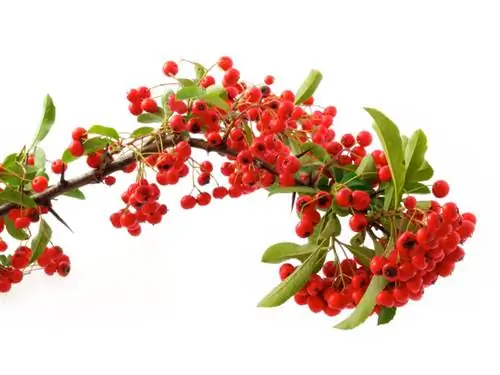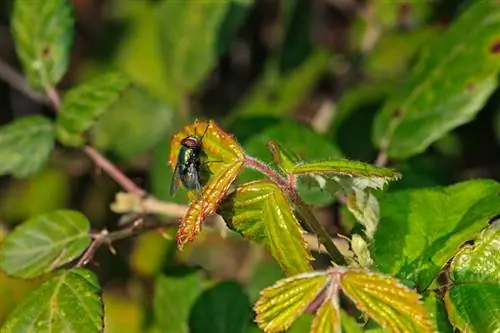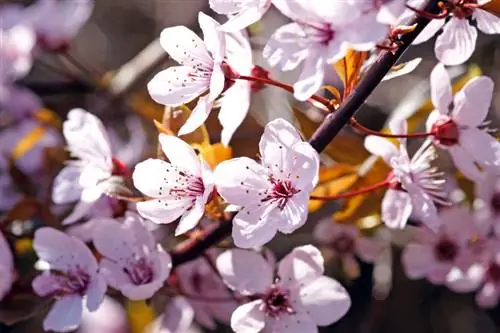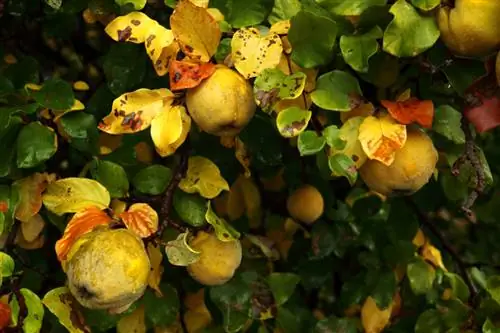- Author admin [email protected].
- Public 2023-12-16 16:46.
- Last modified 2025-01-23 11:20.
The firethorn is one of the relatively resilient garden trees. If the location is chosen well and the subsoil is not too moist, it will thrive he althy and strong. Some varieties may develop scab. Therefore, choose a species in advance that is robust against this fungus.

What diseases can affect firethorn and how are they treated?
Firethorn can be affected by diseases such as scab fungus or fire blight. To combat scab, cut infected branches deep into he althy wood and dispose of plant parts in household waste. Fire blight must be reported and, if infested, infected trees should be treated by professionals.
Fungal infestation caused by scab
In humid weather conditions, mycosis can spread like an epidemic. The fungal spores overwinter in the fruits as well as in the bark and fallen leaves of the firethorn. In spring, the young leaves and fresh shoots are first infected. As soon as the firethorn forms fruits, these also show the typical damage pattern.
The harmful image
The berries become unsightly brown or gray and have a cracked, scabby surface. The typical gray-brown fungal growth appears on the leaves. The mycelium of the fungus runs through the entire leaf and parts of the bark.
The fight
Due to the long infection period, fighting scab is difficult. It is usually impossible to pick off all the affected leaves and flowers. Therefore, cut all affected branches back deep into the he althy wood. Since the fungal spores also survive in compost, you must dispose of the removed plant parts with household waste. To ensure that the fungus is not transmitted to other garden plants, you must then carefully disinfect the cutting tool.
Sprays with pesticides, however, are not very promising.
When cutting, make sure that the trees are loose and air-permeable. This means that dripping water can evaporate quickly after rain showers and the risk of infection is minimized.
Infection with fire blight
Fire blight is increasingly spreading in some regions of Germany. If they have good living conditions, it will be impossible to keep the bacteria away in the affected areas permanently. Fire blight spreads quickly over large areas and damages numerous fruit trees in addition to firethorn. Because of its danger, this plant disease must be reported.
The harmful image
In spring, the flowers and leaves of the firethorn wither and turn brown-black; they look as if they were burned. The shoot tips typically bend downwards. At the infection sites on the shoots, an initially colorless, later yellow-brown bacterial mucus emerges. In winter, dead areas appear on the trunks and branches of the affected plants, which resemble canker sores.
The fight
There is no efficient pesticide against fire blight. In order to prevent the disease from spreading, the infected trees must be precisely cut out or cleared and destroyed by a specialist. The experts at the responsible plant protection office will provide information about suitable measures.






